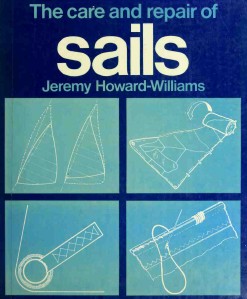
Sails are intricately connected in every aspect to the material from which they are constructed, making it impossible for any book that aims to explore them in detail to overlook the process of sailcloth production and the essential qualities it must possess. The sailmaker invests considerable care and expertise in selecting the cloth for your sail; therefore, it is important to recognize this knowledge when you encounter it, as it is integral to his profession.
Much hinges on his selection, so let us examine some of the factors he must take into account. Sailcloth is typically woven by arranging threads on the loom's beam to create the warp, or lengthwise threads, and then interlacing the thread back and forth over and under the warp to produce what is referred to as the weft.
The resulting weave is compacted by beating the weft, ensuring it lies closely together; the tighter the weave, the greater the cover factor, as the weft causes the warp to crimp. When tension is applied along the warp, the lengthwise threads tend to straighten their crimp and open the weft, which increases the cloth's porosity and diminishes its ability to retain any chemical fillers that may have been incorporated; the individual threads may also slightly untwist and elongate.
However, the stretch is minimal, and no significant deformation of the cloth occurs. Nevertheless, when tension is applied at an angle to the threadline, the small squares created by the weave become distorted into diamond shapes, causing the cloth to elongate in the direction of the tension and narrow across this line.
Consequently, the cloth shifts at right angles to a line of bias tension, resulting in a fold of additional material along this line; the outcome in a sail is increased draft along the tension line and a flattening in the area from which the cloth has been drawn. A quality cloth should not remain permanently deformed after such stress but should return to its original shape once the tension is released.
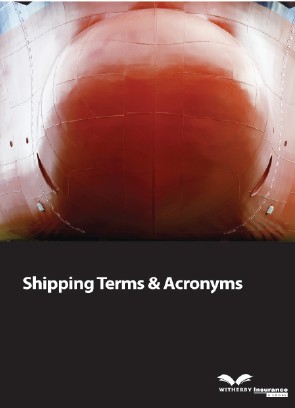
This is a very rare publication by Witherby Insurance, intended to provide the participants of the international maritime shipping industry with the ready reference source for all shipping terminology and acronyms they may encounter when performing their everyday activities.
Needless to repeat how important it is today, and actually always, to have clear knowledge of the terminology. You are kindly invited to get your copy of this guide and have it readily available at all times when doing your job, in order to avoid any potential confusion.
The content has been updated by the authors and is now reflecting all recent happenings within the industry. The material of the booklet is arranged in two major parts, one is the Acronyms from A to Z, and the second is devoted entirely to the shipping terminology.
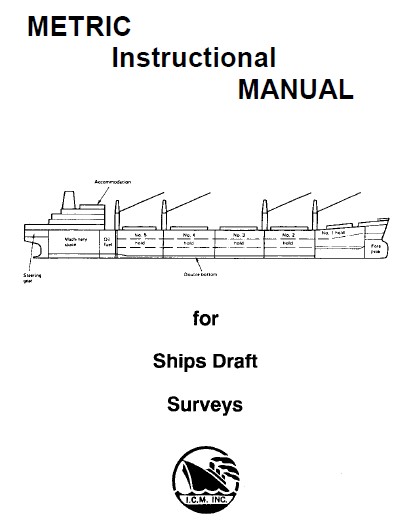
This Handbook is designed to be a helping hand for Deck Officers, with a focus on loading calculations. Emphasizing practical solutions, it tackles the most common questions that arise when loading ships. While those seeking in-depth knowledge can consult comprehensive publications for a more detailed understanding of stability, this Handbook provides a concise and accessible guide.
The initial chapter offers an overview of the Handbook's purpose and summarizes the content of each chapter. You'll also find an alphabetical list of abbreviations, a chapter-by-chapter compilation of formulas, and recommendations for the necessary materials and equipment for ship-loading computations. Chapter two delves into the key aspects and best practices that directly impact safe and efficient ship loading.
Chapter three provides a detailed, step-by-step guide to performing an International Standard Draft Survey, complete with practical examples. Moving on, chapter four is dedicated to cargo deadweight, outlining the main considerations when calculating cargo deadweight. Again, each step in the process is explained in detail with accompanying examples.
The subsequent chapter summarizes the essential factors in trim and stability calculations, while the chapter on grain loading addresses the relevant IMCO and SOLAS requirements. The final chapter focuses on measuring the rolling period for timber carriers, a procedure most commonly required when carrying timber deck cargo but applicable to any vessel or cargo.
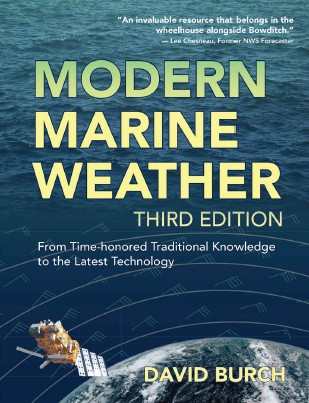
Marine weather information has undergone a revolution in the last five years, prompting a major update to this book. The addition of color offers significant usability improvements. We've expanded the use of GRIB forecasts, incorporating them into maps and images. High-resolution models now make local wind forecasts available in digital form.
Which is most useful to day sailing trips in oceans and locals. This book introduces best practices in weather routing and goes into detail on ASCAT scatterometer winds (now available in GRIB format). We emphasize getting marine weather from email, providing vital process details.
Today's cellphone barometers enhance the value of careful pressure analysis which allows for careful and accurate information. Forecast management (map sequencing) has been enhanced, and squall forecasting methods have been updated. The entire book has been revised for optimal use, although external links may change, you can find any updates at the following link: starpath.com/wx .

This model course outlines the guidelines for training utilizing an engine room simulator, which is designated as one method for demonstrating competence in Column 3 of tables A-III/1, A-III/2, A-III/4, A-III/6, and A-III/7, excluding the Functions "Controlling the operation of the ship and care for the persons on board at the operational level/management level."
The exercises are overseen by an instructor and will initially enable the trainee to familiarize themselves with the machinery and controls employed in the engine rooms of contemporary merchant vessels. Moreover, the trainee will develop proficiency in monitoring instrument displays while evaluating the normal operational conditions of a propulsion plant.
Each exercise should be preceded by a briefing session and followed by a group debriefing, which will analyze the actions and decisions made by the trainee. It is important to note that this course does not substitute for the experience gained from actual watchkeeping service in the engine room aboard a ship. The course aims to impart knowledge and skills related to the operation, supervision, and monitoring of the safe operation and control of the ship's machinery in accordance with the provisions of the STCW Code.
Specifically, the trainee will gain familiarity with the instrumentation and controls utilized in the engine rooms of modern merchant ships, an understanding of the necessity for proper pre-planning, the use of checklists, and the timeline involved in starting up propulsion plant machinery.
Additionally, they will gain experience in identifying operational issues and troubleshooting, as well as the capacity for logical decision-making that enhances operational safety. Admission to the course is available to trainees with a basic background and knowledge, as well as to marine engineers seeking to enhance their understanding of the operation of machinery on a modern merchant vessel.
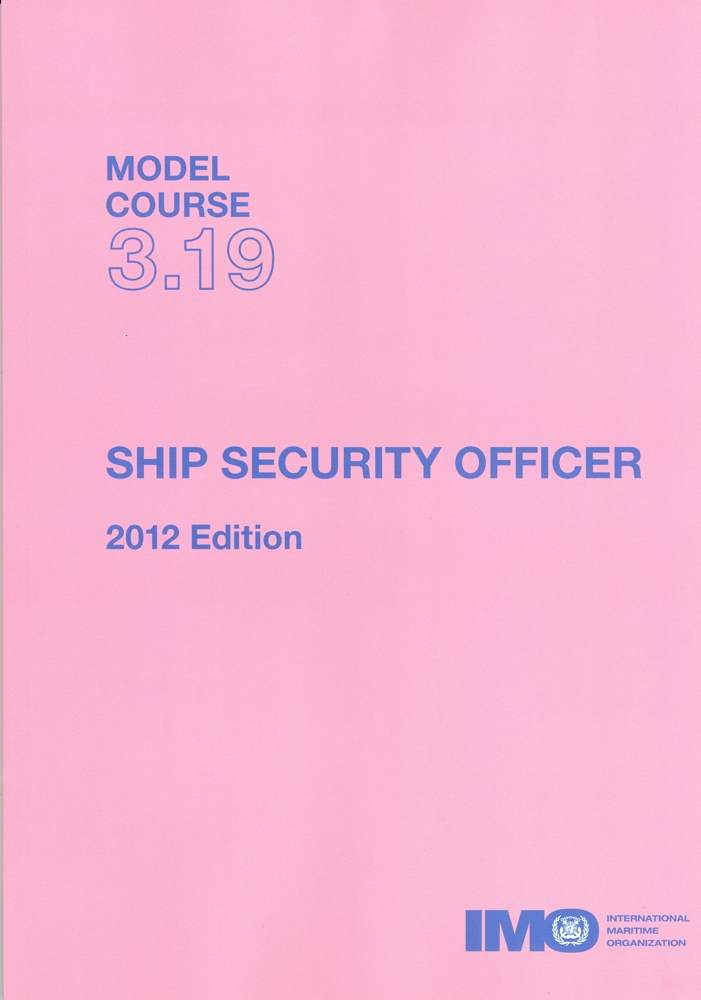
The IMO Model Course 3.19, Ship Security Officer 2012 Edition, serves as a vital training resource for maritime professionals responsible for protecting ships from security threats. This extensive course provides participants with the essential skills and knowledge required to effectively fulfill the duties of a Ship Security Officer (SSO). It adheres to the standards set forth in the ISPS Code and STCW Code, ensuring a uniform level of competency worldwide.
Tailored for individuals who may take on the crucial role of an SSO, the IMO Model Course 3.19 highlights the significance of developing and upholding a Ship Security Plan. Participants will acquire the skills to communicate effectively with Company Security Officers (CSOs) and Port Facility Security Officers (PFSOs). Grasping these relationships is crucial for fostering a secure maritime environment. This revised edition of the course places considerable emphasis on modern security challenges, particularly the increasing threat of piracy and armed robbery targeting ships.
By tackling these pressing issues, the IMO Model Course 3.19 equips maritime personnel to proactively address security threats, thereby enhancing the overall safety of international shipping operations. Gain a deeper understanding of international maritime security frameworks, which will enhance your professional skills.
Cultivate practical abilities to evaluate and manage security risks, ensuring the safety of both crew and vessel. By enrolling in the IMO Model Course 3.19, mariners will not only meet regulatory obligations but also play a crucial role in fostering a secure maritime industry. Invest in your future and arm yourself with the necessary tools to protect vessels against evolving security threats.

We introduce the greatly anticipated, eighth release of the IMPA Marine Stores Guide (note that the seventh and sixth editions are still available), significantly updated with a wealth of useful data. The subject Guide is referred to as the best and most comprehensive one of those available today, and this is the reason of its popularity among the maritime shipping industry professionals all around the world.
Traditionally, the content of the Guide includes more that a fifty thousand codes, allowing it to retain the rank of the truly ultimate reference source and a must-have for the mariners. This new edition can boast numerous newly introduced features enhancing the usability of the guide and facilitating the smooth transactions.
As usual, the products included in the Guide, are supplemented with the standard six-digit code, exactly the way it has been done for the past forty years, to eliminate confusion when searching for the products and making orders. We can definitely say that this Guide continues to serve as an invaluable reference source and practically useful tool bridging the needs and supplies.

The course encompasses technical elements of instruction that are directly related to the maritime simulator domain. While not going into specifics at this point, it is important to highlight that the pedagogy of simulators, along with the psychology of learning, constitutes a significant component of the course.
The subjects addressed in this modular course have been selected to offer a valuable introduction for individuals with limited teaching experience, as well as a beneficial refresher for seasoned instructors. Furthermore, those whose teaching experience has primarily involved lecturing will gain substantial exposure, as they will delve into the realm of maritime simulation and various instructional techniques.
The course examines the significance of simulators in maritime training and the associated pedagogy of simulator use in training on a maritime simulator. Fundamental aspects of the learning process, the objectives of training, the establishment of training goals, and the basic principles of course design, along with the psychology of learning, have also been discussed; however, these do not constitute the primary focus of the course.
It is presumed that participants will have undergone formal training in these areas prior to engaging in this program. The course features a substantial practical component, wherein participants apply theoretical guidelines by planning, developing, executing, and assessing their own simulation exercises. The experimental nature of the course, which is predominantly conducted using simulators, affords participants the opportunity to refine the essential skills needed to become effective simulator instructors.